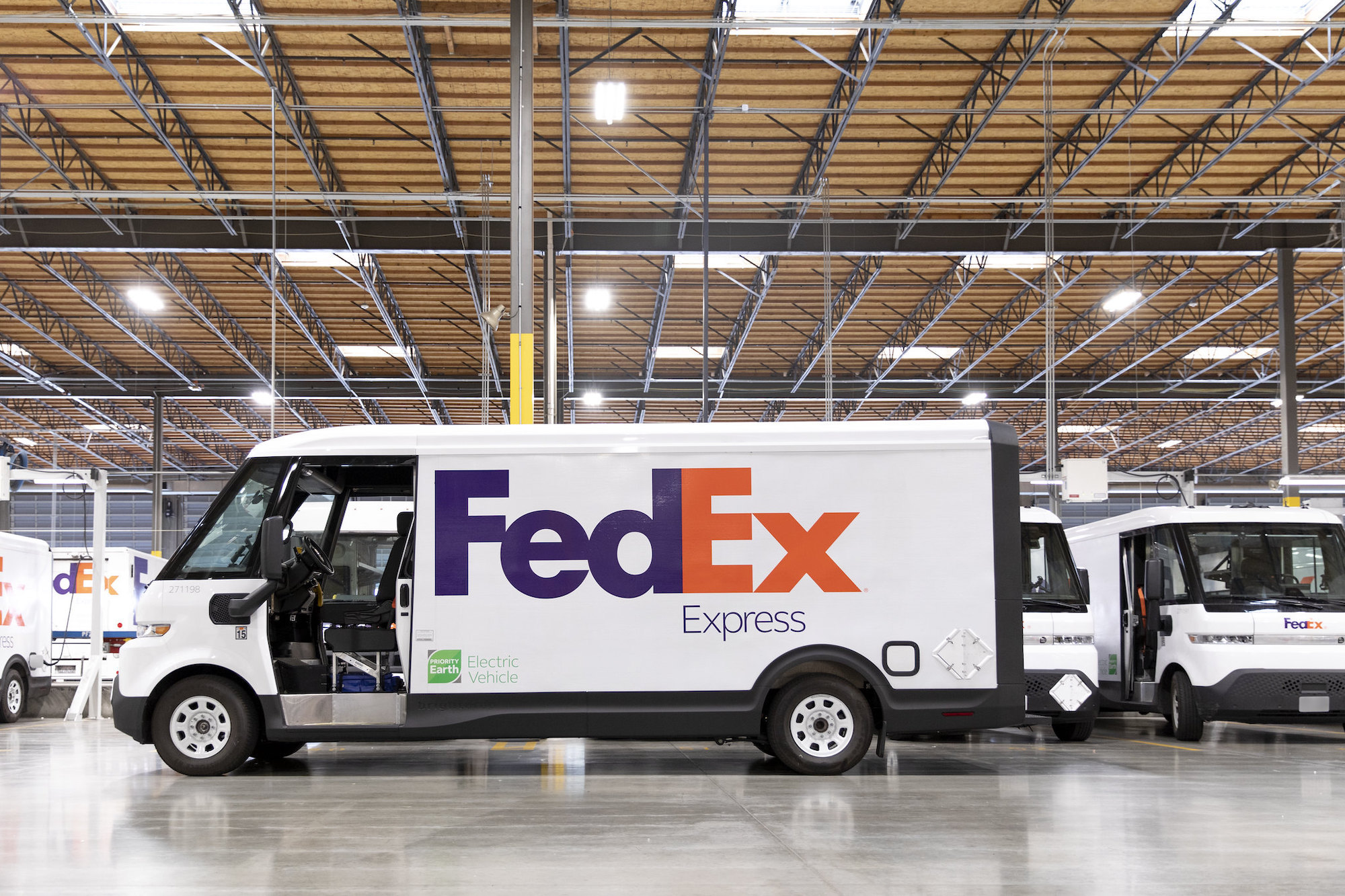

Electric vehicles and package deliveries are poised to go together as naturally as stamps stick onto envelopes. One of the big players moving forward in that space, FedEx, said today that it now has 150 electric delivery trucks in its Southern California fleet.
Those delivery vehicles, named the Zevo 600 after their approximate cubic-foot cargo capacity, come from a General Motors subsidiary called BrightDrop.
Each van boasts a range of some 250 miles on a charge. One of them set a world record in April for the longest journey of an electric delivery vehicle on just one charge, when it clocked nearly 259 miles. (The road trip was so riveting that a reporter tagging along from the Verge seems to have, understandably, fallen asleep twice.) Like other electric vehicles from GM, the battery system that undergirds these BrightDrop rigs is called Ultium.
The first five of these BrightDrop vehicles arrived in December, to an Inglewood, California, FedEx facility, the parcel giant previously said. Those deliveries continued, and now the electric vans number 150 in total, all in the hands of FedEx Express. The other stats to know: The company wants all of its pick-up and delivery vehicles to be electric by 2040, and it says it will purchase 2,500 Zevo 600s specifically from BrightDrop “over the next few years.” Plus, it says that it has already built “more than 500 charging stations” in the Golden State.
James Di Filippo, a senior policy analyst with Atlas Public Policy, says that he expects to see a rapid shift to electrification in the parcel delivery space. He’s pleased with milestones like the one FedEx just announced. “It’s good to see those numbers starting to move up, especially because supply chain issues have plagued this transition—the delivery fleet transition—for a while,” he says. “Being able to take delivery on 150 vehicles is great news.”
FedEx isn’t the only delivery company working towards electrifying its last-mile vehicles. UPS’s worldwide fleet includes “more than 1,000 electric and plugin hybrid electric vehicles on the road,” it notes on its website. The shipping corporation has also said it plans to buy 10,000 electric vehicles from a UK company called Arrival.
[Related: FedEx will start testing a 1,900-pound drone for hauling packages]
When it comes to Amazon, The New York Times has described its need for EVs as “insatiable.” Amazon plans to incorporate electric delivery vehicles from Rivian (which it partially owns) into its fleet, though there have been speed bumps and drama with that process, and the number of vehicles it has actually delivered is not public. “We continue to produce and deliver Amazon custom electric delivery vans,” a Rivian spokesperson says via email, “with a focus on ramping both production and deliveries.”
Amazon says that by 2030, it expects to have 100,000 delivery vans from Rivian making the rounds.
Still, there are some variables holding back the switch to EVs, such as supply chain disruptions. And rural areas could pose a challenge for electric deliveries, Di Filippo says, because of the longer distances. But “urban parcel delivery is a slam dunk for electric vehicles,” he says.
Metropolitan areas have a number of factors that lend themselves nicely to electrification: The fleet vehicles may return to a central hub where they can be charged after their routes, for example, and the routes themselves are predictable and not too long.
“It’s great from a climate change perspective,” Di Filippo says, “especially as we are relying more and more on parcel delivery for the final mile of retail goods.” Plus, “it’s fantastic for air quality” in the neighborhoods in which they are delivering, he notes.
An outlier is the United States Postal Service, which, as of April, was facing lawsuits resulting from its plans for its next-generation vehicles. As of March, it planned for just 20 percent of its new vehicles to be electric, with the rest to be combustion-engine powered. By comparison, FedEx’s plans hold for 100 percent of its pickup and delivery vehicles to be electric within the next 18 years.
“The real red flag for USPS is that all of their direct competitors in the private parcel delivery space have electrification plans, [and] are putting them into motion,” Di Filippo says.
